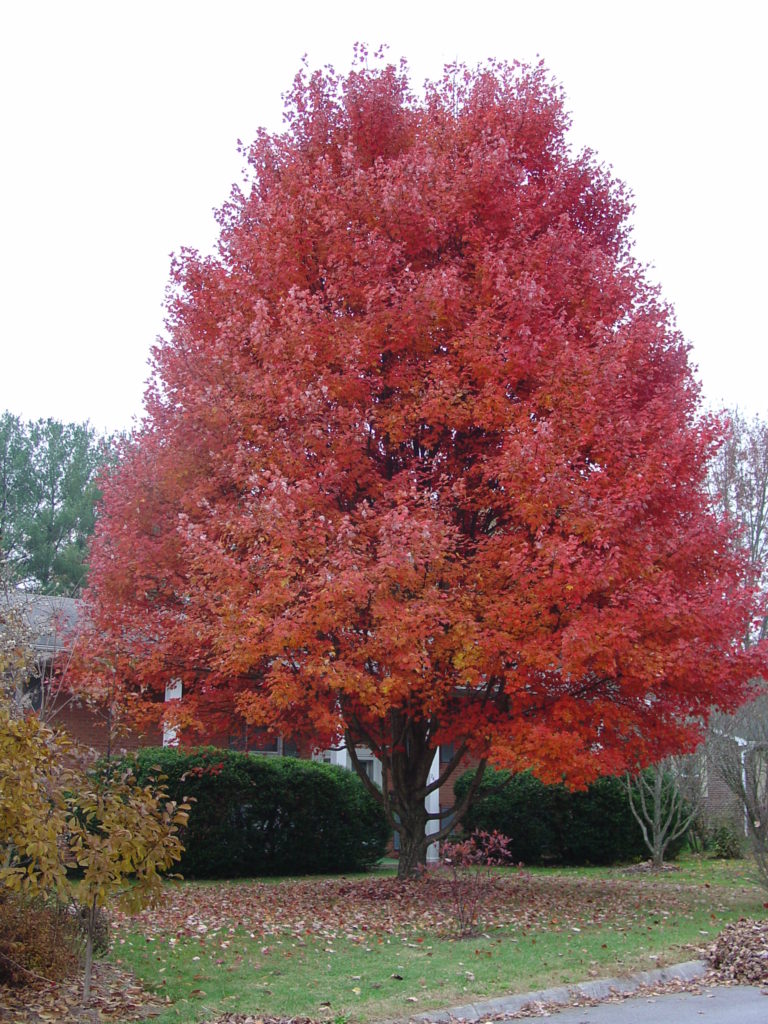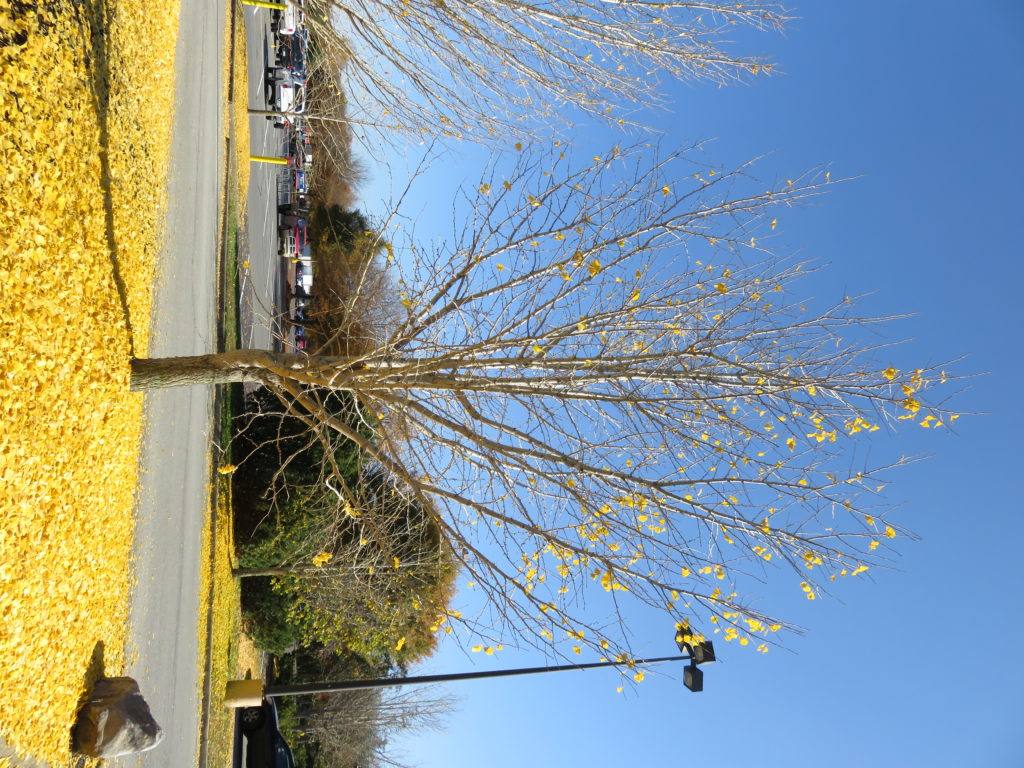Fall leaf colors of woodland and landscape trees vary from one year to the next. Foliage colors are determined by monthly weather conditions and several environmental factors. Rainfall amounts and daily temperature levels during August and September are key determining factors.

Best autumn leaf colors develop as daytime hours are shortening, daytime hours are sunny and cool, and nights stay cool with temps above freezing (32°F). Wind and rainfall are also factors. Trees should be healthy and not troubled by disease and pest problems. While some dry weather is ok, extended dryness lasting 4-5 weeks may cause leaves to shrivel and fall prematurely.
Green leaves develop purple/red/orange/yellow in response to late summer/fall cool temperatures:
· Yellow and orange leaf colors become more noticeable as the carotenoid pigments emerge. Chlorophyll greens fade away and no longer mask the carotene hues.
· Red hues, caused by the leaf anthocyanins, develop in the cooler days. Phosphate exits the leaves, moving downward into the roots. More sunlight equals more anthocyanin and more intense red hues.
Finally, tree selection is important. Particular tree species and their cultivars are genetically superior with regard to autumnal leaf colors. A list of twenty –five (25) U.S. native and non-native tree species highly rated for their fall color follows. They are not posted in any specific order.
Red maple (Acer rubrum) – ‘Red Sunset’, October Glory’
Sugar maple (Acer saccharum) – ‘Green Mountain’
Japanese maples (Acer palmatum) – fall color are variable/ dependent on cultivar
Vine maple (Acer circinatum)
Amur maple (Acer ginnala) – ‘Flame’
Sweet gum (Liquidambar styraciflua)
Ginkgo, maidenhair tree (Ginkgo biloba)
Black gum, tupelo (Nyssa sylvatica) – ‘Wildfire’, Red Rage’, Green Gable®
Washington hawthorn (Crataegus phaenopyrum)
Serviceberry tree (3) – (Amelanchier x grandiflora); downy serviceberry (A. arborea); Allegheny serviceberry (A. laevis)
Red oak (Quercus rubra)
Flowering dogwood (Cornus florida)
Chinese or kousa dogwood (Cornus kousa)
Green ash (Fraxinus pensylvanicum)
Katsura tree (Cercidiphyllum japonicum)
Sassafras (Sassafras albidum)
Staghorn sumac (Rhus typhina)
Hickories (Carya spp.)
River birch (Betula nigra)
Gray birch (Betula populifolia)
Sweet birch (Betula lenta)
American persimmon (Diospyros virginiana)
Quaking aspen (Populus tremuloides)
Bald cypress (Taxodium distichum)
Franklin tree (Franklinia alatamaha)


 Posted in
Posted in 
